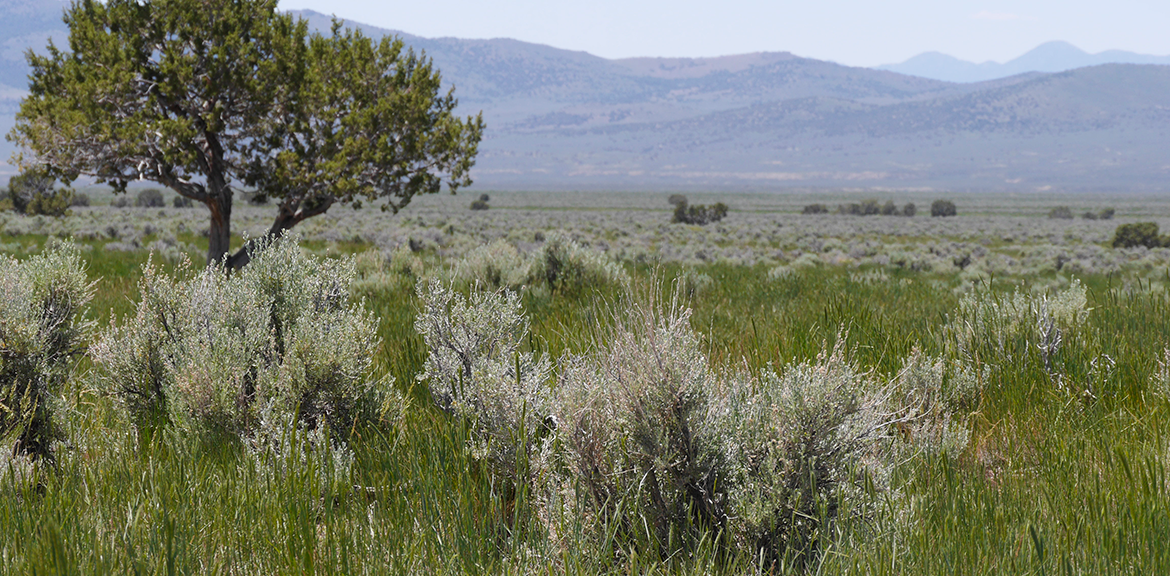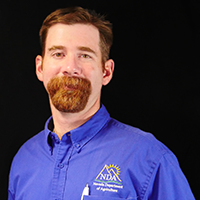
Written by David Voth, Rangeland Health coordinator for the Nevada Department of Agriculture
In my job, one simple math error can have dire consequences for the ranchers I work with. As Rangeland Health coordinator for the Nevada Department of Agriculture (NDA), I monitor land and assist livestock producers in monitoring their rangeland to determine available plant vegetation and ecosystem health.
Since I can’t monitor thousands of acres, I have to sample smaller areas that will accurately represent larger areas. Monitoring includes clipping and weighing vegetation to calculate the plant growth of an area. If I make a simple error in the conversion of square meters to acres, it could result in an inaccurate representation of the vegetation that the land has available. This error could misrepresent ecological systems and harm the economic livelihoods the NDA Rangeland Health program aims to protect.
The Rangeland Health program is designed to help ranchers make decisions related to their land that promote economically viable and sustainable practices. In my day to day, I often work in the field monitoring rangeland or in the office in Elko, Nevada completing paperwork related to that monitoring.
Monitoring usually occurs where livestock or wildlife graze. I look to see how many grazeable plants (also known as feed) are at a site, how much feed was used by animals and how much feed is currently left over.
Applying STEM concepts every day in rangeland health
I rely on STEM concepts in math, science and technology to get my job done. Many of the math and science concepts I use are relatively simple to grasp, but a basic understanding of them is essential to collecting the correct information.
Every time I’m in the field monitoring, I use algebra and statistics. Algebraic formulas help me convert vegetation samples measured in square feet to feed for livestock in acres. I also use statistics to determine average percentage of native plants compared to percentage of invasive plants (those that grow aggressively, spread and displace other plants) in a sample.
While math plays a very important role in monitoring land, plant science is also needed in my career. Identifying plant species and how they grow is essential when dealing with how they respond to grazing, wildfires and drought.
In addition, my position requires working knowledge of technology. Recently, I helped create a rangeland monitoring smartphone application that will allow ranchers to monitor the health of the rangeland by documenting the condition of the land where they graze their animals. I also use spreadsheets and other computer technology every day to organize my work and keep track of monitoring projects.
Pathway to my career in rangeland health
My position allows me to be on the range, where I always knew I belonged. When I was 12 years old, I had dreams of working in livestock production and owning a ranch. The curiosity I held for this career path never diminished.
Before starting my career in agriculture, I earned my degree in animal science with an emphasis in production management from Fresno State. Studying beef production taught me the needs of cattle in classes like ruminant nutrition, feeds and feeding and reproduction.
My education also helped me better understand who livestock producers are, why they make the choices they do and how I can best help them. Those lessons allow me to keep an open mind in the work I do today.
Receiving a STEM education helped me secure my current position. This job allows me to interact with both ranchers and livestock, never having to give up what I am passionate about.
Every day I look forward to assisting producers and land management agencies in making the best decisions possible to care for Nevada’s land, livestock and ecosystems.
Next steps to involve your child or teen
If your children or teens think my job is interesting, check out a few resources and opportunities to expand their experiences in plant and animal systems.
- Agriculture in the Classroom has resources for teachers and students.
- 4-H youth development programs offer clubs and programs focused on animal science.
- Nevada Youth Range Camp for high school students teaches teens about Nevada’s desert and mountain rangeland and diverse ecosystems first hand.
- High school agricultural education offers courses like environmental management, animal science, natural resources and wildlife management and associated FFA activities.
Students interested in post-secondary opportunities in plant and animal systems will find related degree programs at:
• University of Nevada, Reno College of Agriculture, Biotechnology, and Natural Resources
• University of Nevada, Reno Range Club
• University of Nevada, Las Vegas
• Truckee Meadows Community College

About David
David Voth works as the Rangeland Health coordinator for the Nevada Department of Agriculture (NDA) in Elko, Nevada where he helps to care for Nevada’s rangelands, livestock and livestock producers. He was born and raised in central California where he attended Fresno State to get his degree in animal science. He came to Nevada in 2004 to cowboy on large ranches. He worked in beef production in Nevada until he took his current position at the NDA in September 2016.